WeldingMetal
MIG Welding 101: What is MIG Welding and how to learn it
By Kristin Arzt
MIG Welding 101: What is MIG Welding and how to learn it
The Crucible’s Welding Department teaches beginning and advanced classes in four different kinds of welding: MIG welding, oxy-acetylene gas welding, arc or stick welding, and TIG welding. With both youth classes starting at age 12 and adult classes, The Crucible’s Welding Department has a number of class offerings that accommodate a wide range of schedules and interest levels. Here, we will dive into how MIG welding works and the advantages of using it for fabrication and repair.
What is MIG welding?
MIG welding stands for metal inert gas and is an arc welding process that uses a solid wire electrode to produce a weld. The electrode is fed into a welding gun and is heated. It is great for welding large and thick materials quickly. It is the most beginner-friendly type of welding, though MIG welds are not as precise, strong, or clean not as TIG welds.
MIG vs. TIG welding
MIG and TIG welding both use an arc to create heat and weld metals together; however, the difference between the two is the way the arc is used. MIG uses a wire welding electrode that constantly moves through the welding machine on a spool to generate heat. TIG (Tungsten inert gas) welding uses a tungsten electrode that produces an electric arc between the torch and the materials.
Compared to TIG, MIG is a faster process that is easy to learn and forgiving of common mistakes. TIG welding is a slower process than MIG that requires more time to master and produces more precise welds on a variety of metals.
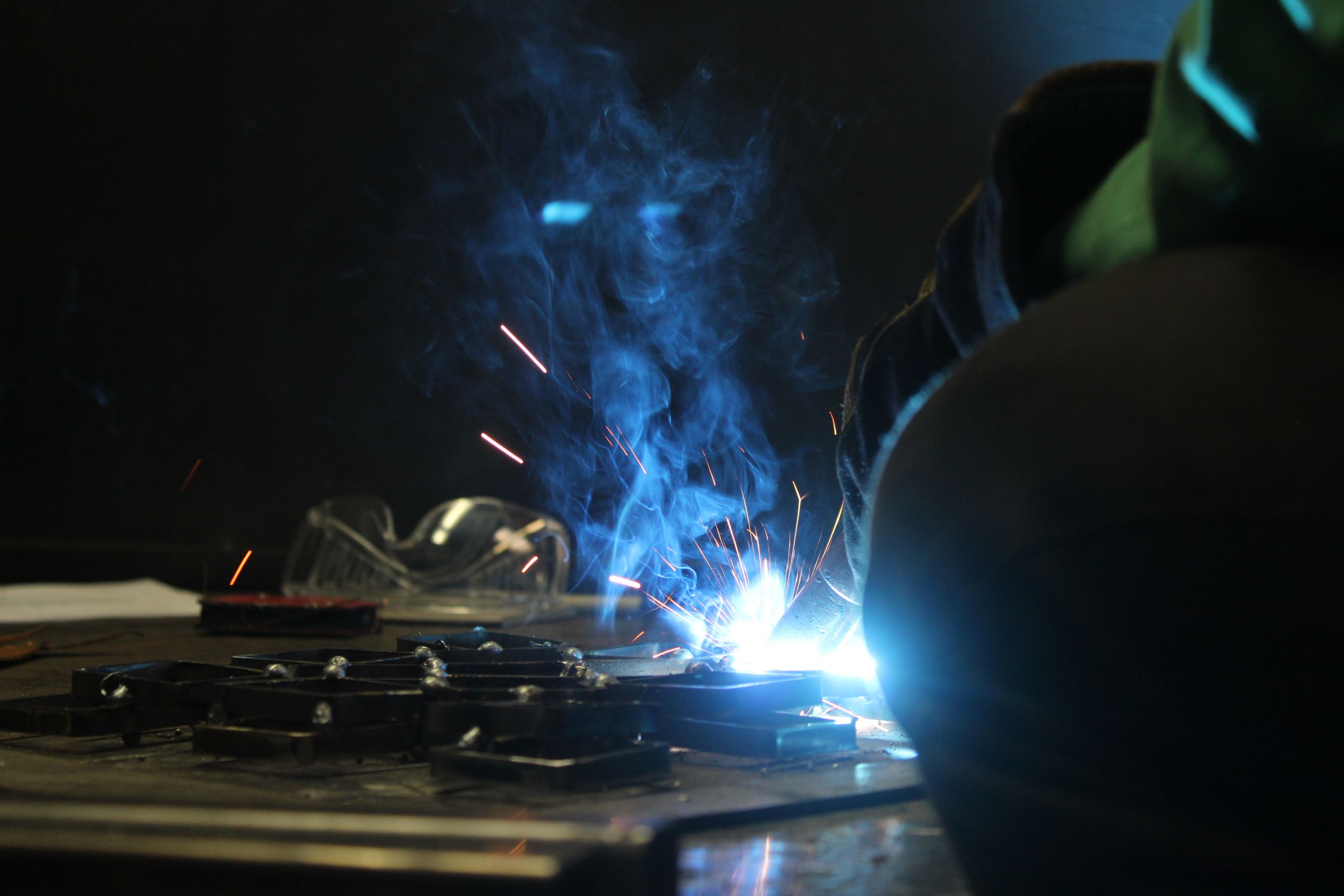
MIG welding applications
MIG welding is a practical skill to learn and can be applied across many different types of fabrication. It is commonly used for the fabrication of heavy-duty projects, ranging from transportation to home improvement.
It is typically used to weld rough materials onto base metals and makes it easy for a welder to strongly join thick materials together. It is specialized and used on different metals, and is most commonly used on steel.
- Common applications of MIG welding include the fabrication and repair of:
- Automobiles
- Railways
- Pressure tanks
- Steel structures
- Home improvements
- Sewage or water systems
- Tractors and other farm equipment
- Cranes and other building equipment
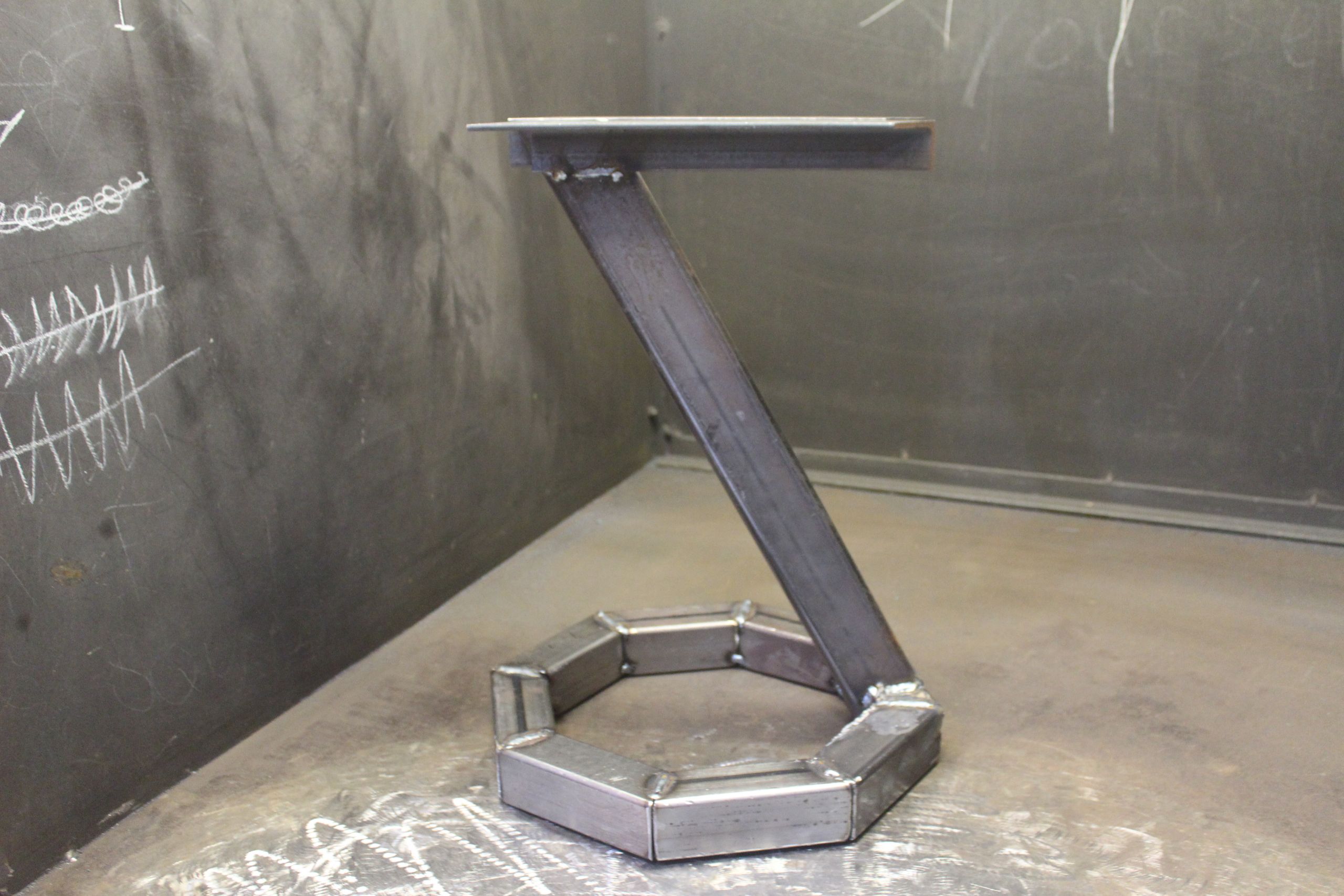
How MIG welding works
MIG welding works through a combination of a metal transfer mode and shielding gas. A MIG welder is a wire-feed type welder, where the material that is used to create the weld is stored on a spool inside of the machine. The tip of the welder becomes the anode of a high amperage electrical charge, grounding between the work surface and the welder. As the wire runs through the welding gun, the trigger melts the wire and fuses it to the base material. You can adjust the feed-speed of the sacrificial wire material and the pressure of the inert gas in order to better control your welds.
Metal Transfer Mode
There are four different general metal transfer modes you can set your MIG welding machine to.
1. Globular transfer – Globular transfer is generally only used on carbon steel and transfers the weld across the arc in large droplets. It is commonly used to weld materials that are laying flat so the welder has more control over the droplet size. This method only uses CO2 shielding gas and can generate more spatter when welding.
2. Short-circuit transfer – This transfer method is typically used on thin materials and can be used to weld in all positions and angles.
4. Spray transfer – This method sprays small molten droplets across the arc using a high voltage and increased wire feed speed. It is a more precise method that creates minimal spatter. Spray transfer works well on thick metals, approached from flat and horizontal angles.
3. Pulse-spray transfer- In pulse-spray transfer mode, the power source alternates between a high voltage and a low voltage. During this alternating switch, the higher current pinches a section of wire and pushes it into the weld puddle. Pulse-spray can be used to weld thick materials from various angles with higher energy than short-circuit transfer.
Shielding Gas
Shielding gas is supplied through the weld gun to ensure that the weld pool does not interact with ambient air, oxidizing the weld area. If oxygen interacts with the weld area, your work will result in excessive spatter and inconsistent welds. Argon is a noble gas and the most commonly used shielding gas because it is easily accessible and easy to control. Using helium would be more costly, and nitrogen would be too volatile. The shielding gas is released through the same nozzle that the welding wire is fed through, creating a protective cloud around the arc as you weld.
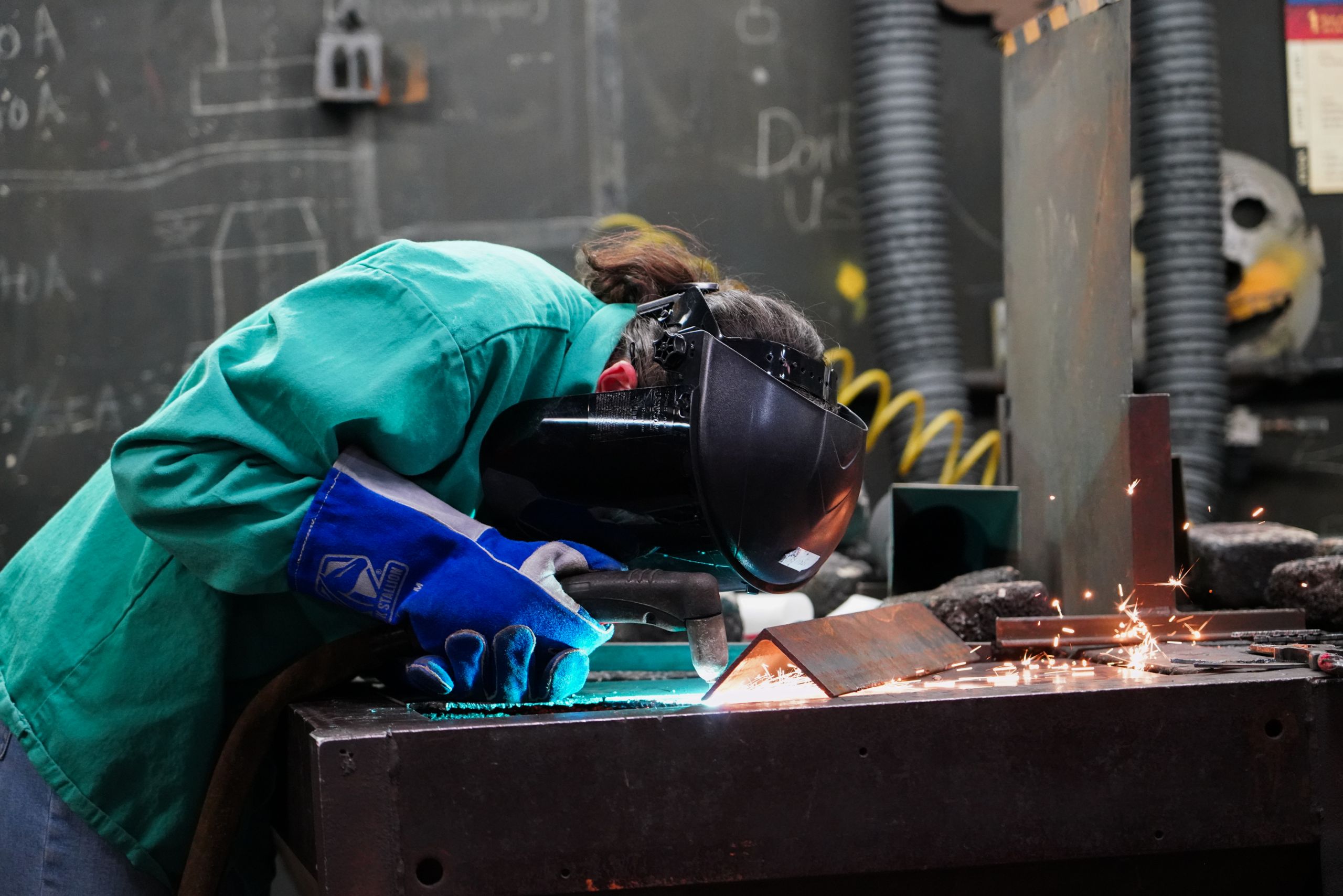
How to learn MIG welding
You can learn how to MIG weld from a friend, at an art school, through an online video tutorial, or at a technical trade school. All types of welding are technical and labor-intensive and require practice and precision. Welders operate large machinery and work with delicate materials using high heat. Make sure you are prepared before you begin to learn to weld. We recommend learning from a professional welder in a class setting when you are just starting out. The Crucible offers new welding classes each week.
Know your goals
There are many possibilities when you are first starting out with welding. It is a great way to make fun projects at home—yard and garden art or sculptural pieces. With enough practice and technical skills, welding can also be a pathway to a lucrative career. Become clear on exactly what you want to get out of your new skill—are you interested in welding as a hobby, art form, or a new career?
Take local classes
Depending on what you decide your goals are when you start to learn welding, you will find there are a few ways to get started. There are many certifications available to welders, depending on the skillset you earn and the welding career you plan to work in. Some high schools and community colleges offer vocational programs. The main certification employers will require is passing the basic American Welding Society Certified Welder test, which you can take at any accredited testing facility.
If you are interested in pursuing welding for personal projects, or simply want to explore which type of welding is right for you, The Crucible offers a vast range of welding classes that are open to both youth and adults.
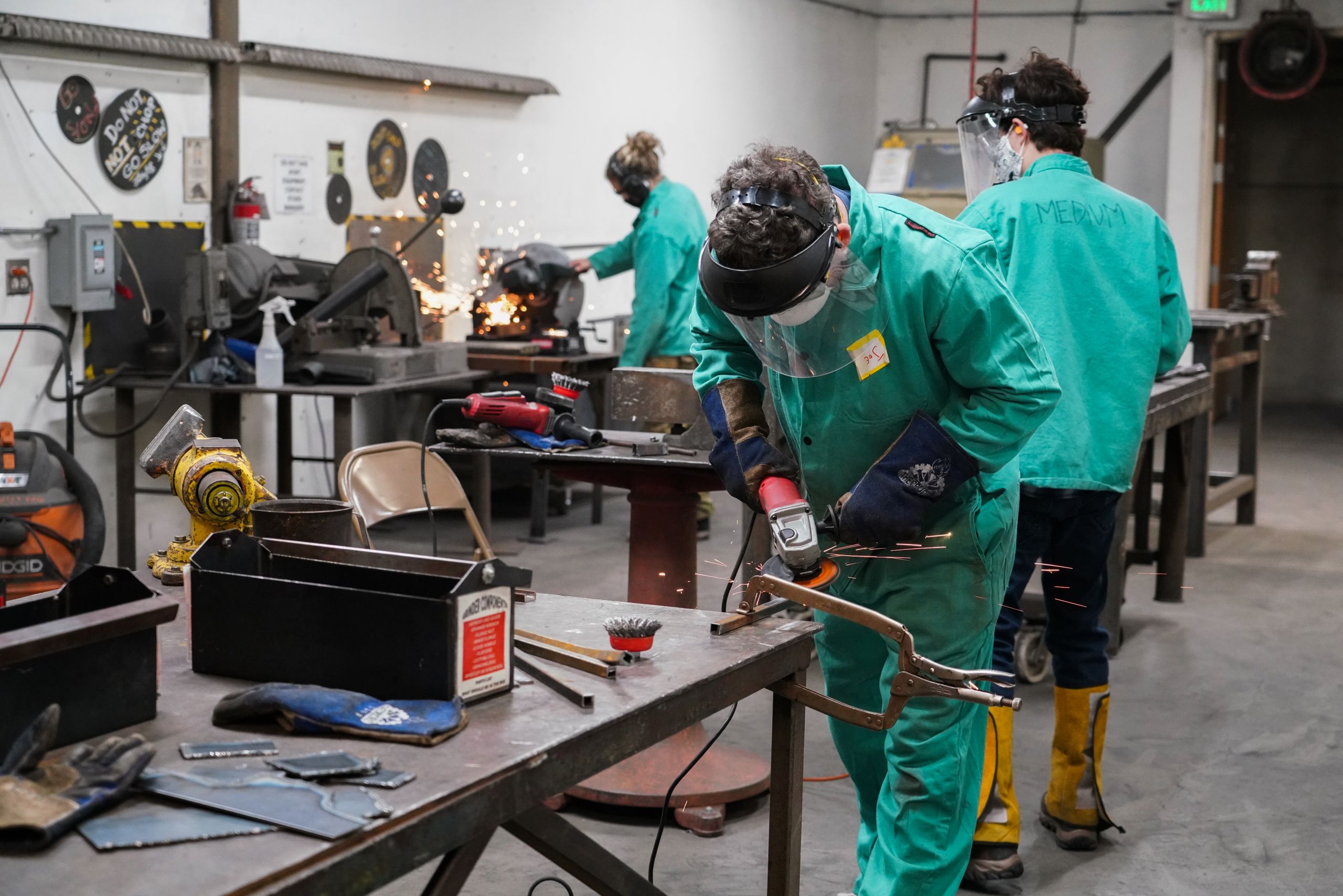
MIG welding at The Crucible
The Crucible offers a variety of MIG Welding classes for all levels, from beginner to advanced, and accommodates many different schedules. You can get a brief introduction to MIG welding in our shorter Friday Flame or 3-Hour Taster: MIG Welding classes. Our beginner-level MIG Welding class offers a deeper dive and longer time commitment to learning how to MIG weld. Once you have completed the beginner level class, you can enroll in more advanced classes like Metal Furniture Fabrication or a MIG and TIG Welding Lab to practice your techniques.
Browse our selection of classes below:
Friday Flame: MIG Welding
Friday Flames are unique nights focused on industrial arts and good company. First, you will get a basic introduction to welding equipment and basic skills, then, “doodle” with welds to create written words or simple images on steel. It is the perfect opportunity to test out MIG welding while having fun.
3-Hour Taster: MIG Welding
3-Hour Tasters are a great way to explore a new art form without the deeper commitment of a full course. After a basic introduction to metal inert gas (MIG) welding, plasma cutting, and fabrication processes, you will learn how to create a small metal sculpture. In just three hours, you can create your own welded piece of art!
Exploring Welding
If you are unsure of which type of welding you want to pursue, The Cruicble’s Exploring Welding class is a great place to start. Students are able to explore the varied possibilities of oxy-acetylene, arc/stick, MIG, and TIG. You will get the chance to try all four, gaining an understanding of which type of welding is most appropriate for the projects you want to complete.
MIG Welding
In this longer, beginner-level class, you will become more familiar with welding equipment and learn how to manipulate the welding torch as the electricity melts the wire and creates a weld. This class covers the fundamentals of MIG welding, such as metallurgy, preparation, joints, technique, and safety, as well as plasma torch cutting. The class begins with a basic, technical welding exercise, then transitions into a small creative project.
Metal Furniture Fabrication
After completing The Crucible’s MIG Welding class, you can enter more advanced classes to create larger projects. In Metal Furniture Fabrication, you can make your own one-of-a-kind furniture for your home! Going beyond basic MIG welding, this course focuses on designing and fabricating functional and aesthetically interesting benches, coffee tables, flower stands, cabinets, wheeled furniture, shelves, coat racks, and just about any other piece of furniture you might like to fabricate. A skilled instructor will help you plan your project and evaluate it for feasibility and cost.
MIG and TIG Welding Lab
The MIG and TIG Welding Lab offers you an opportunity to use The Crucible’s Welding studios and equipment, without having to set up your own studio at home. Students are free to come and go during open lab hours, and will work independently on personal fabrication projects. While the lab monitor will not offer any instruction, they will ensure the safety and practicality of each student welder.
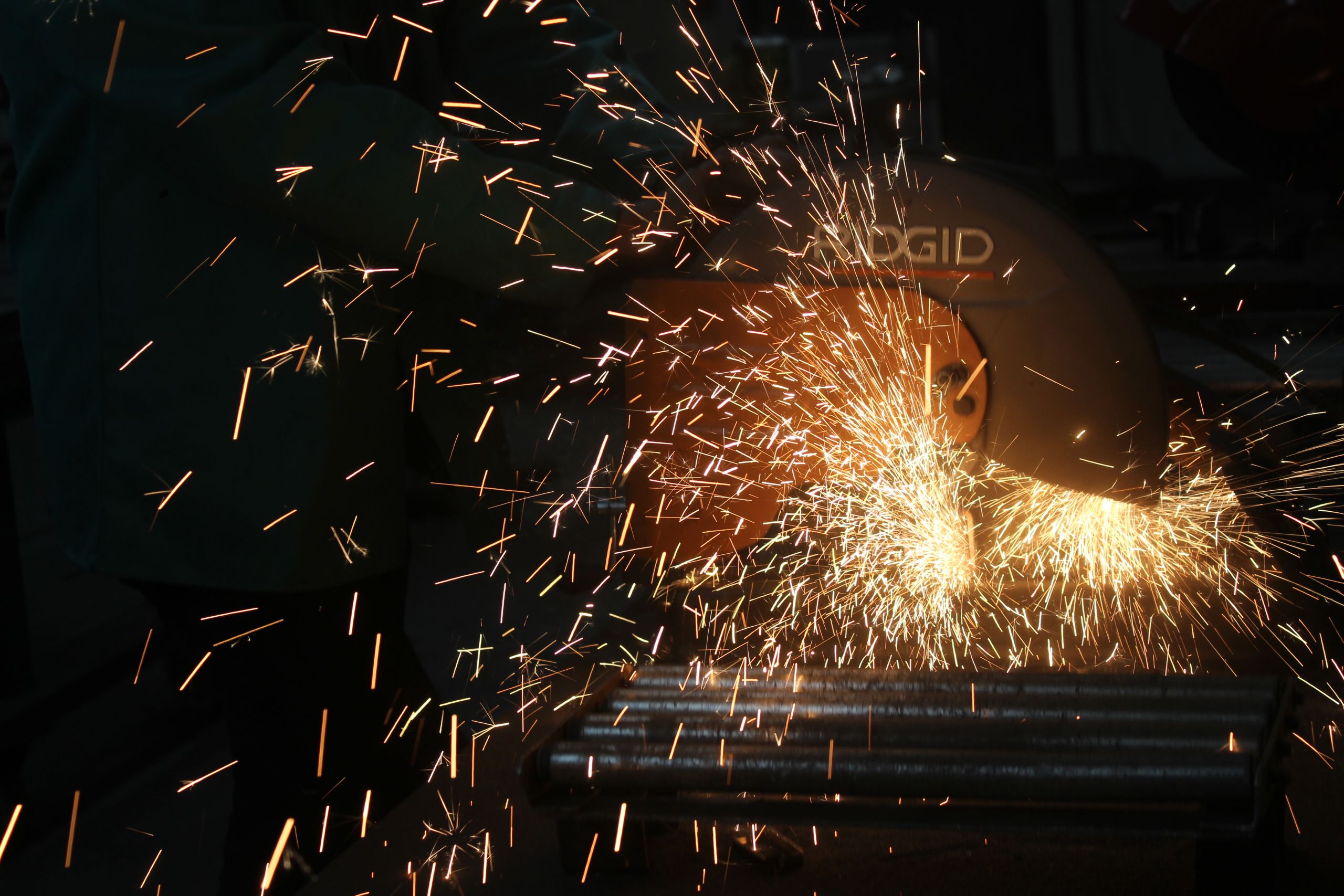
MIG Welding FAQs
Is MIG welding hard to learn?
MIG welding is generally the easiest type of welding for a beginner to learn. MIG welders use a feed wire that runs through the machine at a preselected speed. This makes the process relatively fast and produces consistent welds.
Can I teach myself to MIG weld at home?
It is helpful to learn in-person from an instructor to provide feedback, and with that, you may learn more quickly than teaching yourself at home. However, it is possible to learn welding at home through videos and online tutorials, with plenty of practice. If you have a safe, well-ventilated space, like a garage, to set up a welding shop, you can weld at home with a wire-feed welder, which uses ordinary household electrical current.
Do I need a welding certificate from a program or school?
You do not need a welding certificate or license to weld. You can learn to weld in public in classes, like those offered at The Crucible. Many students who are interested in pursuing welding as a career start out by taking a class at The Crucible to determine whether or not they want to commit the time to a full program. The Crucible is not an accredited welding program and does not provide licenses or degrees upon completion of welding classes at The Crucible.
What type of welding is the strongest?
No welding type is the strongest across all welding applications. The strongest weld depends on the type of metal, the material thickness, and the expected weight loading onto the weld. TIG welding produces the cleanest welds in routine applications because a larger amount of filler metal goes directly into the joint and produces less splatter. It is also ideal for thinner materials that require more precise welds. MIG welding provides the most consistent welds and is the easiest type of welding for beginners. Flux Welding creates the strongest welds in thicker materials. The flux core wire allows the weld to cool more slowly, which creates a more consistent and stable weld joint.
How much do welders make?
The average rate for a welder in the United States is $17.60 per hour, which adds up to around $45,000 annually. Experienced welders can make as much as $35 per hour. Specialty welders can make anywhere from $50,000 to $200,000 annually. Traveling industrial pipe welders earn up to $185,000 a year, and underwater welders can earn over $200,000 annually.
MIG vs TIG vs Stick, which is best?
The type of welding you choose to learn will depend on the type of project you would like to fabricate and the resources that you have available. TIG Welding is the most precise type of welding, but MIG has the best industrial application in terms of the volume of welds that you can accomplish in the shortest amount of time. TIG and MIG both use inert gas. Stick is the simplest process and is most portable due to it being electrically powered. Stick can be done in many different environments from under water to outside on a windy day.
























